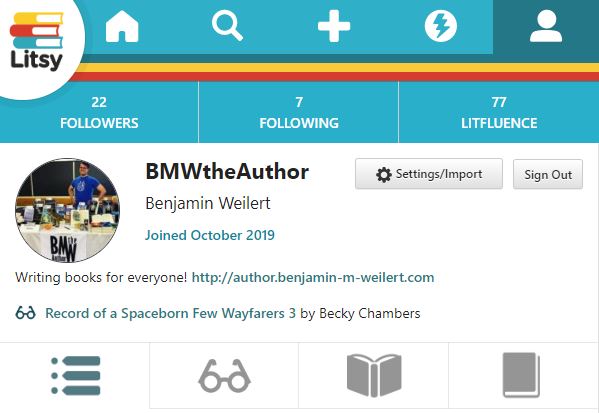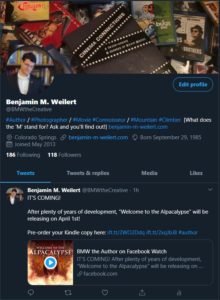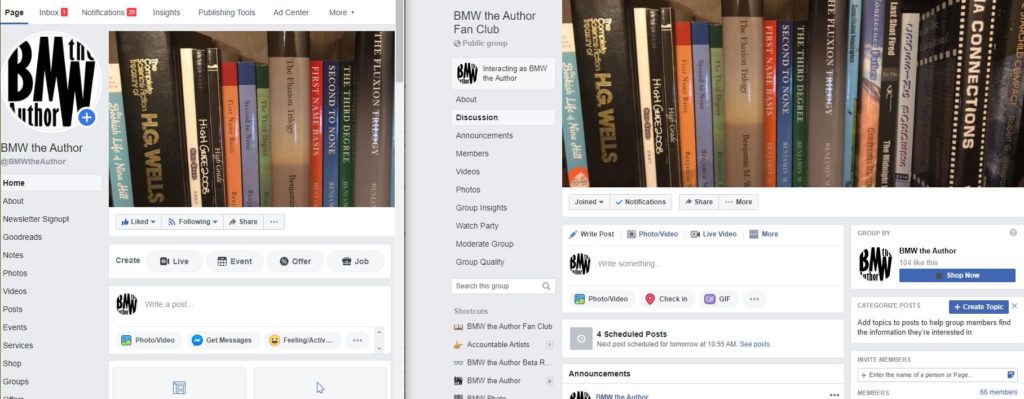While writing is a solitary activity, it doesn’t have to be in a vacuum. Just like any creative pursuit, there is inevitably a community that develops around it. Fortunately, the barriers to entering the writing community are slim to none. Do you write? Then you’re a part of that community. Even if your local area has a writing group that meets in person, it benefits most writers to connect with an online community. Additionally, if you’re an author trying to communicate with potential readers, your reach will be much broader if you’re involved in the most significant online resource: social media.
I understand social media is this huge, terrifying monster for those who either aren’t used to it or are addicted to it. Unfortunately, as an author, a social media presence is vital for connecting with fellow writers and potential readers (some of which are the same people). When it comes down to it, regularly posting content and engaging with the online community shows that you care about it and want to be a part of it. However, know that there’s engagement, and then there’s promotion. As a rule, most people don’t like being sold to constantly, so keep your posts about the book you’ve written that’s for sale to a minimum (with the one exception being if you have a book launching soon). After all, people want to know the author as a relatable person, not as a door-to-door salesperson.
People want to know the author as a relatable person.
Two questions arise: “What social media should I engage with?” and “How much should I post?” The answer to both is “whatever you’re comfortable with,” knowing that most people don’t have time to be on every social media outlet all day, every day. I try and have at least one post a day for Monday through Thursday (expecting people to be out enjoying themselves on Friday and the weekend). As I talked about in a previous post, I also try to have some more meaningful content posted every month, but I’ll get to that in Part 2 of this post.
As I see it, there are three types of social media for authors:
- Video
YouTube is the industry standard for sharing videos online. As an author, this is a place for you to put any number of videos. Perhaps you have a trailer for your book. Maybe you want to un-box your proof copies for a “first look.” If you’re experienced enough, perhaps you can provide advice for authors who are starting out (like I did with Writer Rant). Even just getting on camera and giving reviews of books you’ve read recently is something that creates a connection to the writing and reading communities.

Additionally, BookTube is a community on YouTube that’s focused on books. I haven’t had much interaction with it, so I don’t know how much I’d recommend it. However, plenty of authors I’ve talked to or heard speak on panels at conventions swear by it. If you’re already creating video content for YouTube, it shouldn’t be that difficult to join in the BookTube community as well.
- Pictures
If a picture is worth 1,000 words, then posting on Instagram can convey something faster than a text post. Again, just like YouTube, you can post anything you want (within reason) and be as personal or professional as you want. If you want your readers to see the life you live, you can post pictures from your daily routines. If you have a daily writing habit, maybe post a photo when you’re sitting down to write or after you’re done for the day. Since the only requirement for Instagram is the post be a picture, you can even post quotes, reviews, and other text as an image that you’ve created on your computer.
Additionally, much like BookTube is a YouTube community for readers, Litsy is the same for Instagram. You can post reviews of books you’ve read (or reviews of your books, if you have them), blurbs from your books, and quotes from your books. Because posts on Litsy are tied to a book, people can connect with you through the books you’re reading or through the books you’ve written. Pictures aren’t a necessary feature of a Litsy post, but they do help you stand out from the regular text posts.

- Text
Most authors agree that Twitter is the place to go to engage with the #WritingCommunity. Famous authors like J.K. Rowling, Neil Gaiman, and Stephen King frequent this social media hangout, so it’s an opportunity to connect with famous authors even if you aren’t one yourself (yet). Hashtags are essential on this platform, as they will connect you to broader conversations happening at a quick pace. You should also use similar hashtags in our Instagram photos as well, so having a note on your phone where you can copy and paste a handful of useful hashtags is an excellent way to stay connected.

I can’t keep up with the fast pace of Twitter. For me, I like the slightly more personal Facebook. Now, there are two options for Facebook: Pages and Groups. Having a Facebook Page for your author persona is important to have that professional front where you can post some of your promotional material. Unfortunately, the way Pages are structured, even people who “like” your page probably aren’t going to see what you post. I think this is because Facebook wants Page owners to buy ads for visibility, but even those ads don’t seem to be a good return on investment.
On the other side of Facebook, we have Facebook Groups. I’ve recently found that having a “fan club” group for my author page has generated way more engagement with my audience than the author page has. I think part of this is because Facebook has been advertising its “Groups” feature recently, so any group an individual is involved in will show up in their feed more frequently. Based on my recent experiment, you probably don’t need a Facebook Page anymore, as a “fan club” group has much better engagement and allows fans to post things (thus making your job of creating social media content easier).

In the end, if you focus on one social media platform, that’s probably enough. Being active in all of them is a bit overwhelming. There are reasons to pick one over the others, though. Part of the reason I like Facebook is the ability to schedule posts, so they hit people’s feeds while I’m at work (and when the peak times of Facebook users are on the site). Additionally, I can easily engage with (almost) all social media platforms at once using IFTTT (If This, Then That). This pseudo-programming website allows you to post something on, say, Instagram, and have it automatically post to your Twitter feed and your Facebook Group. This way, you’re only doing the work for one social media platform, but reaping the benefits of posting content on all of them.
While I know there are other places out there where writers and readers can connect; I haven’t spent enough time with them to be able to recommend them. Sites like Reddit, Tumblr, and LinkedIn are also online communities that you can engage with as an author. However, this post only deals with the social media aspect of an author’s online presence. Next month, I’ll cover the “official” places where an author should set up profiles to create an online presence.
Which social media do you use regularly?
Do you like to post videos? Pictures? Text?
Where have you found the best community?
